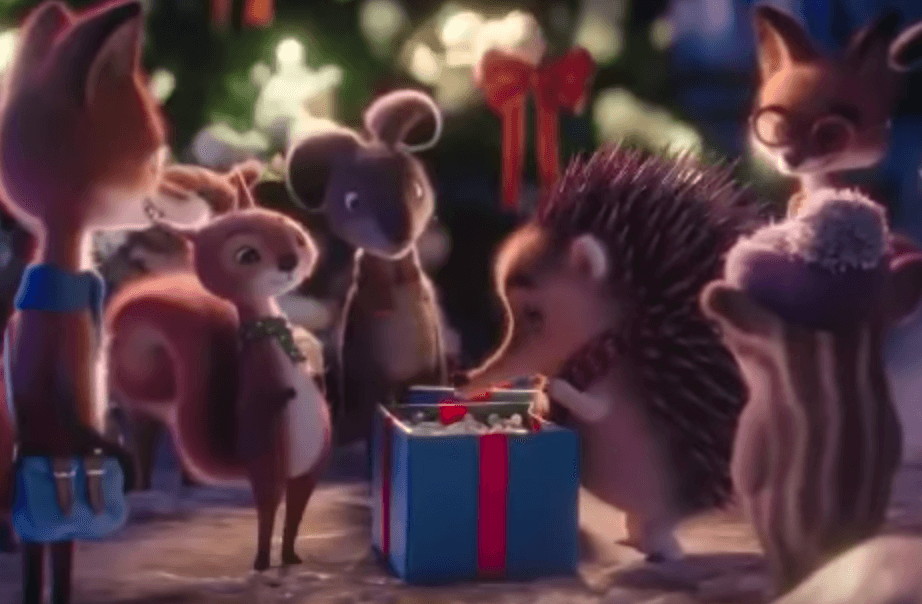Porcupine's First Day at School: A Story of Empathy and Friendship


Reviewed and approved by the psychologist Gema Sánchez Cuevas
One of the ways of working on education in values is through short films. These easy-to-follow stories with their fascinating characters tend to really attract the attention of the little ones. In this case, the short that we’re going to talk about is called Porcupine’s First Day at School.
All children will be able to identify with the little porcupine. After all, they’ve all experienced the nerves of that first day of school when they want to make new friends. However, in the case of the protagonist of this short film, there’s something that puts many obstacles in his way. It’s his quills. Let’s take a look at his story.
The porcupine that kept others away with its quills
The film begins with the porcupine walking into class for the first time. There are a wide variety of animals in his class: squirrels, donkeys, foxes, etc. He greets them enthusiastically and heads to his table. Nevertheless, his quills don’t make it easy for him. He stumbles through the classroom, knocking off the books and pencils of his classmates in the process. Everyone looks at him. They’re excited but also a little scared.
When the classes end and he takes the bus, the situation doesn’t improve. None of his classmates want to sit with him, fearing that his quills will hurt them. The next day, they encourage him to play soccer, but he pricks the ball with his spikes. This makes him feel extremely alone and out of place. Because, although they’re all really kind, he knows he could inadvertently hurt them.
On Christmas day, he notices that they’re talking about him and they all leave the class without him. He feels even sadder. However, what he doesn’t know is that they’ve gone to get him a gift.
It’s a boxful of foam pieces for him to put on his spikes. Everyone hugs him and the little porcupine feels grateful and happy. His quills will never be a problem again.
Empathy and friendship
This short is an extremely interesting film to work on with the little ones. That’s because the porcupine’s classmates don’t despise him, they don’t ignore him, nor do they leave him out. This is even though they’re quite afraid because they know his quills could hurt them. However, they’re aware that it’s not something the little porcupine wants to do.
Therefore, what do his companions do? They empathize with him. They recognize that everyone is different and they need to find a solution so that the porcupine stops feeling alone and isolated by his quills. For this reason, they make a beautiful gesture by giving him a few pieces of foam and then all hugging him. An example of friendship, and of accepting and helping others.
“A real friend is one who walks in when the rest of the world walks out.”
-Walter Winchell-

How to work with the porcupine in class
To work with this short film in class, it’s a good idea to encourage students to highlight the values that they’ve become aware of. Although friendship and empathy will be two of them, there are more. For instance, respect, tolerance, accepting the other and integrating them into the group, etc. The children could explain themselves how they understand these values and give examples.
Also, so that they’re aware of what shouldn’t be done, they can give examples of what the alternative situation would be like. They’ll surely have witnessed an episode of bullying or teasing toward a schoolmate for being different, so should be perfectly able to do this. In fact, this little film is a fantastic resource for them to realize that bullying isn’t right and that it doesn’t generate positive emotions.
Furthermore, the children can reflect on real situations that they’ve encountered themselves similar to those of the porcupine and answer questions such as ” How did your classmates react? ” or ” Did they help you in any way? “.This could be done either in the school environment or at home.
This film about the little porcupine is extremely valuable for children in learning how to relate to their peers, understanding the value of friendship, respecting the differences of others, and not excluding anyone from their class. As a matter of fact, it could even be of help to certain adults who’ve forgotten these values.
One of the ways of working on education in values is through short films. These easy-to-follow stories with their fascinating characters tend to really attract the attention of the little ones. In this case, the short that we’re going to talk about is called Porcupine’s First Day at School.
All children will be able to identify with the little porcupine. After all, they’ve all experienced the nerves of that first day of school when they want to make new friends. However, in the case of the protagonist of this short film, there’s something that puts many obstacles in his way. It’s his quills. Let’s take a look at his story.
The porcupine that kept others away with its quills
The film begins with the porcupine walking into class for the first time. There are a wide variety of animals in his class: squirrels, donkeys, foxes, etc. He greets them enthusiastically and heads to his table. Nevertheless, his quills don’t make it easy for him. He stumbles through the classroom, knocking off the books and pencils of his classmates in the process. Everyone looks at him. They’re excited but also a little scared.
When the classes end and he takes the bus, the situation doesn’t improve. None of his classmates want to sit with him, fearing that his quills will hurt them. The next day, they encourage him to play soccer, but he pricks the ball with his spikes. This makes him feel extremely alone and out of place. Because, although they’re all really kind, he knows he could inadvertently hurt them.
On Christmas day, he notices that they’re talking about him and they all leave the class without him. He feels even sadder. However, what he doesn’t know is that they’ve gone to get him a gift.
It’s a boxful of foam pieces for him to put on his spikes. Everyone hugs him and the little porcupine feels grateful and happy. His quills will never be a problem again.
Empathy and friendship
This short is an extremely interesting film to work on with the little ones. That’s because the porcupine’s classmates don’t despise him, they don’t ignore him, nor do they leave him out. This is even though they’re quite afraid because they know his quills could hurt them. However, they’re aware that it’s not something the little porcupine wants to do.
Therefore, what do his companions do? They empathize with him. They recognize that everyone is different and they need to find a solution so that the porcupine stops feeling alone and isolated by his quills. For this reason, they make a beautiful gesture by giving him a few pieces of foam and then all hugging him. An example of friendship, and of accepting and helping others.
“A real friend is one who walks in when the rest of the world walks out.”
-Walter Winchell-

How to work with the porcupine in class
To work with this short film in class, it’s a good idea to encourage students to highlight the values that they’ve become aware of. Although friendship and empathy will be two of them, there are more. For instance, respect, tolerance, accepting the other and integrating them into the group, etc. The children could explain themselves how they understand these values and give examples.
Also, so that they’re aware of what shouldn’t be done, they can give examples of what the alternative situation would be like. They’ll surely have witnessed an episode of bullying or teasing toward a schoolmate for being different, so should be perfectly able to do this. In fact, this little film is a fantastic resource for them to realize that bullying isn’t right and that it doesn’t generate positive emotions.
Furthermore, the children can reflect on real situations that they’ve encountered themselves similar to those of the porcupine and answer questions such as ” How did your classmates react? ” or ” Did they help you in any way? “.This could be done either in the school environment or at home.
This film about the little porcupine is extremely valuable for children in learning how to relate to their peers, understanding the value of friendship, respecting the differences of others, and not excluding anyone from their class. As a matter of fact, it could even be of help to certain adults who’ve forgotten these values.
All cited sources were thoroughly reviewed by our team to ensure their quality, reliability, currency, and validity. The bibliography of this article was considered reliable and of academic or scientific accuracy.
- Alonso, J. M. (2004). La educación en valores en la institución escolar: planeación-programación. Plaza y Valdes.
- Cortina, A., Gray, J., María, J., Trías, E., & Vargas, M. (2002). Educación y los valores. Biblioteca.
- Parra Ortiz, J. M. (2003). La educación en valores y su práctica en el aula.
This text is provided for informational purposes only and does not replace consultation with a professional. If in doubt, consult your specialist.







